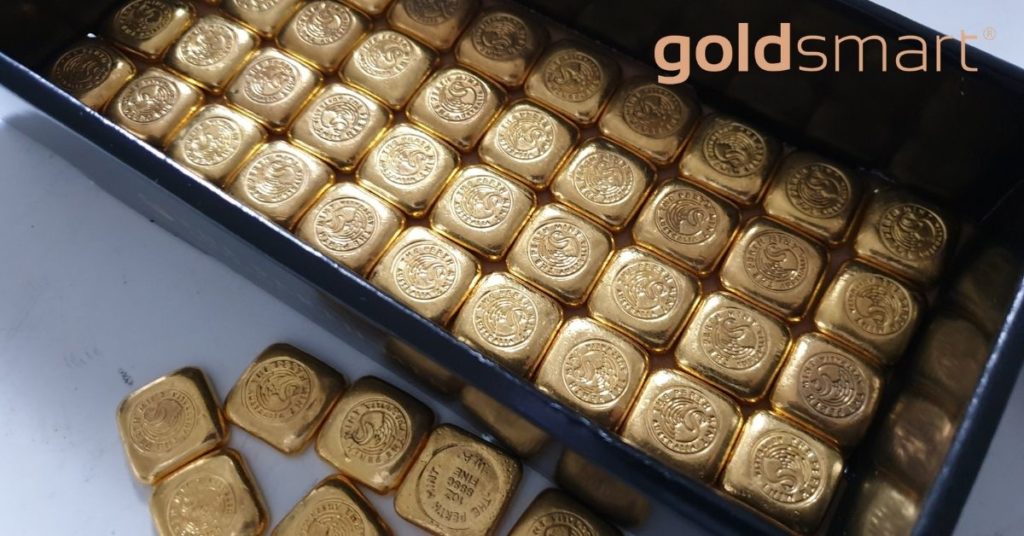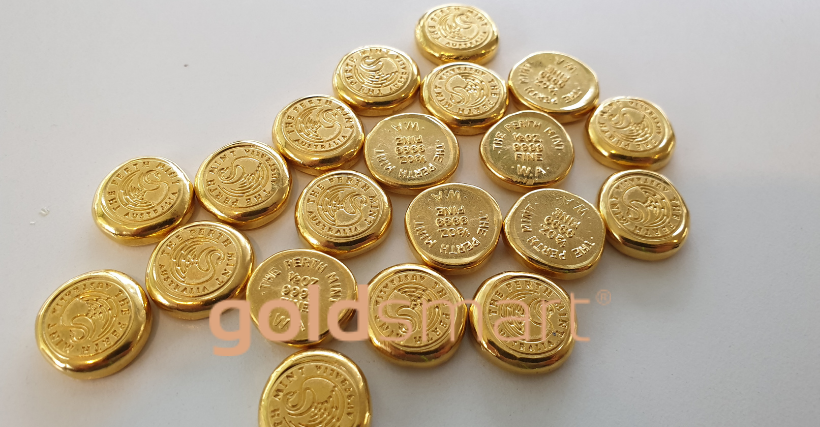
Table conversations can be interesting social events that can last for hours, and once the ice is broken people will often inject all kinds of stories on a given topic from presumably personal experience. This is how most people have learned socially for centuries. However, it is also a very easy way for folks to also end up with the wrong information too. When it comes to selling personal gold, the Internet has not made things any easier. With any kind of a search engine check people will easily find lots of content and material that ends up being just empty marketing to either sell goods or buy goods without a lot of guidance. And that can create a lot of mistakes too.
The fact is, gold buyers look for very specific tell-tale signs when they purchase personal gold from private individuals, and people should definitely be aware before walking into a buyer’s office or store what to expect. Doing so not only prevents confusion, it also helps avoid embarrassment and frustration as well; gold is one of the few assets that is often personal and emotionally attached as well. So, professional buyers will regularly look for objective qualities and aspects to point to for their price evaluation. This avoids ambiguous pricing methodologies that people get leery of quickly, and it provides a fair price for individuals that is objective and market-based.
The Basic Qualities
Gold is gold is gold, right? Well, not quite. Professional buyers will definitely be first interested in any objects that a pure yellow gold (normal form), white gold or rose gold. The concentration of the gold (i.e. karat value) does not suddenly take items off the table; it only differentiates between how much will be paid for an item make high purity versus lower content. Gold jewellery and items that are physically broken or damaged are not really that big of an issue, even with mismatched pairs or matches missing, as long as the item is gold and not gold-plated or mixed with stones and inlays.
Once the material is confirmed as gold and not some other kind of mix and that the offerings are pure without stones or other effects added and embedded in the metal casting, then it’s time to get to the content quality.
Differentiating the Gold Content Buyers Look For
Professional buyers will then take gold items and look for distinct manufacturing marks that denote that type of gold used to make the item. With bullion forms and government sovereign coins that part is easy; the quality of the gold is typically stamped into the bullion in a visible form. With jewellery things get a bit more difficult. In high-quality items the original manufacturer will have placed some kind of a small maker’s stamp in the item to identify its gold quality. This will be visible on inspection as a number and then the letter K. So, for example, if a ring is stamped “12K” on the inside of the finger band, the manufacturer identified the content as 12 karat gold. That immediately tells the buyer the ring, if verified true, has a content value of 58.3 percent pure gold. A necklace stamped 10K similarly would signify a value of 41.7 percent pure gold. The buyer can then estimate the value of the item versus the spot market. Once the item is then verified or tested for gold to ensure it’s not a fake, the buyer will measure the weight and being calculating the price offer to the seller which includes the buyer’s difference from the spot market so that he or she can retain a profit on resold gold.
Most jewellery designed for regular and frequent use is going to have a lower number than the “pure” version of gold known to be 24 karats. The reason is simple; gold is a soft metal on its own. If jewellery was only made of 24K gold, things would break and bend very easily with daily or regular use, and folks would find wearing jewellery impractical. So other metals are added to the mix to make the overall gold stronger. However, that also reduces the gold content in the jewellery, making it worthless as resold or scrap gold later on. This is why a buyer could have two identical necklaces where one is 12 karats and the other 24 karats and with dramatically different buying offers for the gold involved.
Several different testing methods can be used to verify one is dealing with authentic gold and not some kind of fake or gold-plated item. Professional buyers vary in their methods but three of the common approaches include:
The acid test – using a very thin sample of the item’s gold, which does cause a minor amount of damage, the buyer applies an acid which then reacts and identifies the gold content level.
The magnet test – A non-destructive method, a strong magnet is waved near the gold item. If it had other metals in it, the item would react and move with the magnet. Gold is not magnetic so there should be no reaction.
The loupe test – This is more of an examination versus a test. The buyer uses a portable magnifying lens to find any maker’s marks identifying what kind of gold was used in the making of the item.

The Kind of Material Gold Buyers Avoid
As with any market-based exchange, there are going to be plenty of categories and materials people might think are eligible and will be rejected by a professional gold buyer. Some of the more common ones definitely have gold in them but it is not in a form that is usable or viable for a scrap gold refining operation to work with.
Gold-plated material is the first area that buyers see the most of getting mixed up with real gold. It looks like gold and has the same color, but it is not pure content. Gold-plating is an electrical and chemical adhesion of a thin layer of gold to a base metal. The amount of gold actually involved is so thin and minor, it would be cost-prohibitive to try and remove it for recovery. Since gold-refining involves melting gold down so that it can be bulked and re-sold or reused as a stock bars by industrial buyers, gold-plated items simply are unusable. Gold foils or gold wrappings also do not produce what a professional buyer is looking for. Again, this is another form of wrapping a thin layer of real gold onto non-gold material. A number of maker’ marks are usually added to quickly identify costume jewellery or similar materials, and any of this symbols pretty much shuts down an item from being considered: KT GP, KT GF, KT GEP, RGP.
In some cases, the gold involved, usually, a coin, is worth far more as a collectible than as bullion. A professional gold buyer who is ethical would identify this factor and, if they also do business in collectibles, may make a commensurate offer from that perspective. This is not always the case, but many buyers maintain a licensed business that has been in operation for many years. They are not interested in developing a reputation of “cheating” someone out of a big find that the personal seller may not be fully aware of. This is oftentimes how collectibles are “found” when a professional is brought in for an evaluation.
The Type of Gold Buyer Auckland Service Who May Not Know Their Job
Private sellers may feel that all gold-buying operations are the same, and it is an arms-length transaction simply selling anything gold from party to the next. This is repeatedly proven to not be true. Pawn shops, for example, have a high reputation for paying the least amount of value for what they buy because the venue type is almost always used as a means for fast cash. So, the regular pawn buyer expects their seller to be under strain and willing to take ready cash versus holding out for a better price point.
Check-cashing venues are in a similar boat. They are run primarily to provide short-term cash loans at higher than normal interest rates for profit maximization. Gold buying tends to be a side-activity and the buyer frequently has very little training or professionalism as a scrap gold evaluator. Again, the assumption here is that seller is desperate and needs money right away, so the safe position for the payday loan venue is to offer a low cash value quickly and make a profit on the purchase. No surprise, many can be cheated out of better scrap gold pricing found elsewhere with a bit more patience.
Hotel buyers are here-today, gone-tomorrow operations. They literally involve a buyer who sets up shop at a local hotel, a person’s home, or a meeting location and offers to buy anyone’s local gold on hand with “great” prices. They will usually blanket the local areas with flyers and slogans like, “Sell Gold Auckland Cash Fast” and “Unload Unwanted Gold for Quick Cash.” Reputable gold buyers Auckland venues do not market or communicate in this fashion. The hotel buyer modus operandi is similar to the above two categories – people will sell quickly when they see ready cash in hand. And, unlike the pawn shop, a seller cannot get something back if the sale ended up being a personal mistake.

Professionalism Makes a Difference
High-quality service gold buyers can be discriminating against on what they buy, but they also see their role as protecting the industry, the private seller, and their business as well. Years before the idea of selling unwanted gold was relegated to just channels where people were in financial situations needed cash quickly. However, because of what has happened with the gold markets worldwide in the last two decades, the scrap gold market has professionalized considerably in a regular, established industry with a set of standards and ethics. Not every buyer follows these examples, but all of the established venues and businesses voluntarily enforce rules on themselves to ensure customer protection as well as their own business success.
For private sellers working with professional buyers who look for specific gold qualities can be a great way to be educated on what qualifies as “good” scrap gold. Not only can a person learn first-hand what a professional buyer is looking for, it also teaches them things to look for when they are buying their own gold jewellery or gold bullion later on in a different situation. And the overall process increases the trustworthiness and financial safety for all involved as well.
Gold Smart has been in operation for years, helping private individuals and customers liquidate scrap and unwanted gold through reliable and safe channels. With a professional team regularly re-training to stay up with technology and changes in the gold market as well as manufacturing methods used for gold jewellery and similar, Gold Smart’s gold buyers are some of the most skilled in the New Zealand market and are often relied upon as subject matter experts in the trade. To find out more about Gold Smart’s gold buying program or to schedule your own appointment, call or email any time. Gold Smart can also make arrangements for large lot evaluations as well to ensure your comfort and a smooth transaction